

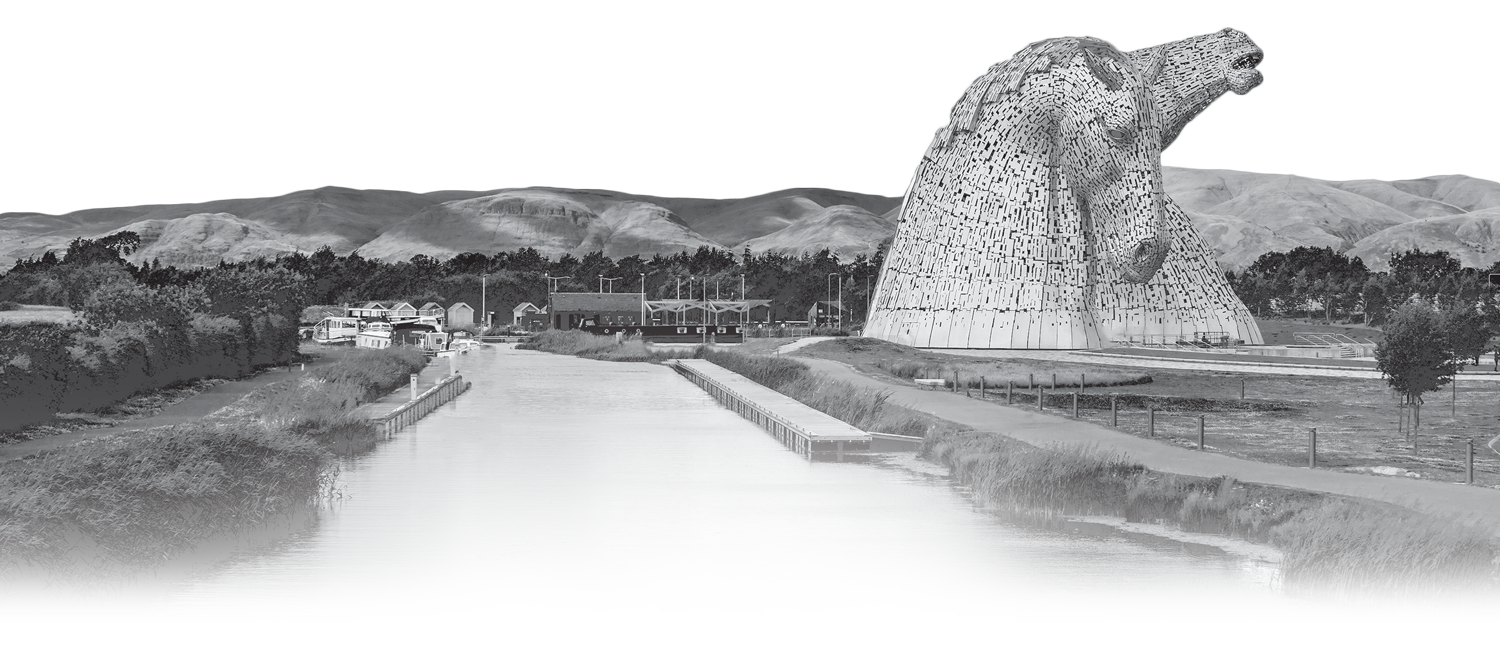
The clydesdale breed is a large, friendly and versatile horse breed, but unfortunately there are not many of them left in the world. In order to get to know the breed, and what to do with these big horses, we have teamed up with Clydesdale Breeders Denmark, a group working on spreading the knowledge of this special horse breed.
By Line Holm Rasmussen // Photo: Clydesdale Breeders Denmark // Illustration: Canva Pro
To get to know the Clydesdale breed better, and find out what it is used for nowadays, we have teamed up with Clydesdale Breeders Denmark. Clydesdale Breeders Denmark is a group of passionate horse people who are trying to increase the number of Clydesdale horses in the world (especially in Denmark) and spread awareness and knowledge of the breed and how you can use it. They are a collaborative group consisting of Saane Clydesdales and Stald Dania. The collaboration is based on exchanges of experience in relation to both care, training and breeding of the Clydesdale. But the group also have a purpose of spreading the knowledge of the breed and getting more horses to Denmark. In total, the two stables make 3-7 foals a year, and also import
Clydesdales – primarily to use them in
breeding or sell them in Denmark.
What makes the breed special?
In order to point out the most special thing about the breed, we asked the group what they fell for with this particular breed.
“The special thing about Clydes-
dales, and what you fall for at first glance, is the beautiful appearance with the gentle and calm expression from the big brown eyes. The size itself is impressive, but the beautiful feathering on the hoofs and the long slender legs with flat bones also help to give the breed a majestic look,” explains Ejner Møller Andersen from Clydesdale Breeders Denmark and adds:
“Its calm and devoted temperament, as well as the will to learn and give its best is also very characteristic for the breed. No matter what you want to
achieve, you can always count on it to do what it can to satisfy you requirements.”
Versatility offers many possibilities
In addition to the beautiful appearance and the wonderful mind, the versatility of the breed is according to Ejner Møller Andersen also much appreciated.
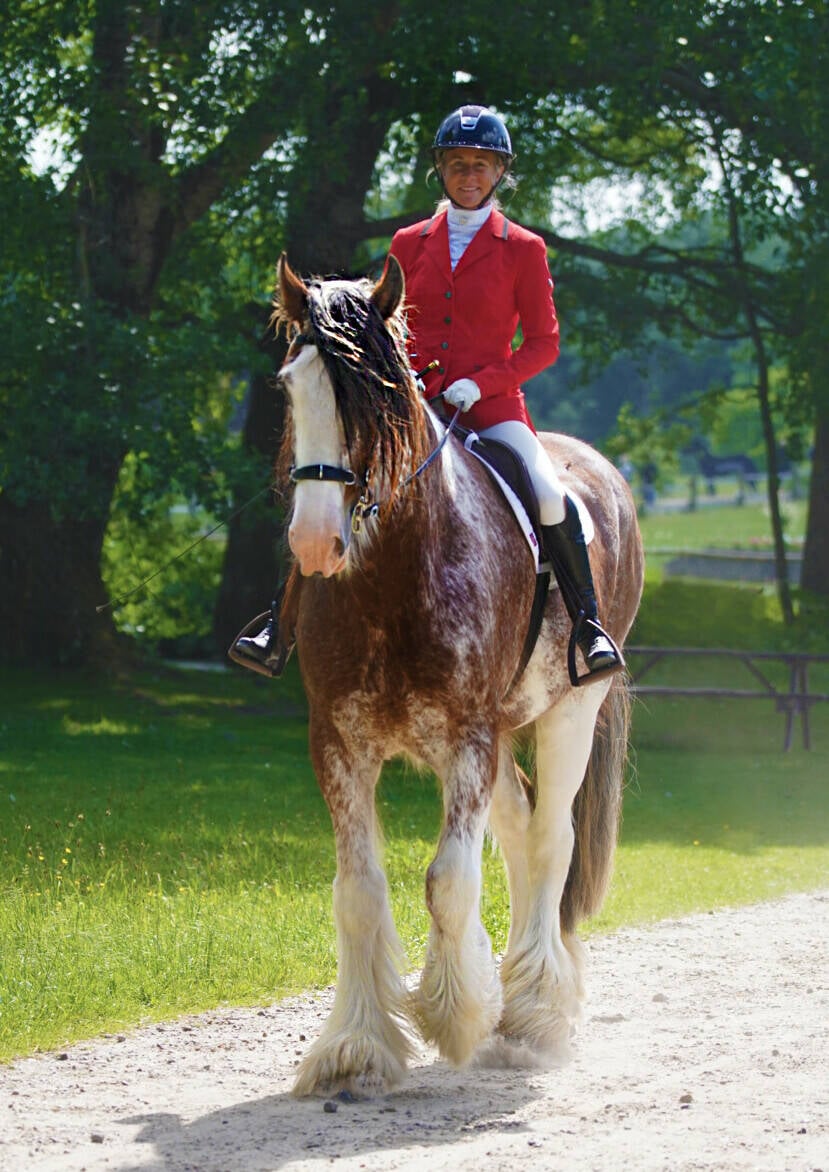
"Riding a Clydesdale, is a great feeling"
“The best thing about the breed is its versatility. Whether you want to ride in nature, use it to drive a cart, work with timber or just have it as a horse to have fun with, there is no better breed. At Stald Dania we use the horses for trail riding, driving and working in the forest. At Saane Clydesdales, the horses are used for riding and logging, which is an exciting form of competition that is developing here in Denmark. In their home country, Scotland, the horses are often seen at shows, competing for the most beautiful bred horse. However, Clydesdales with riders are also becoming more popular.”
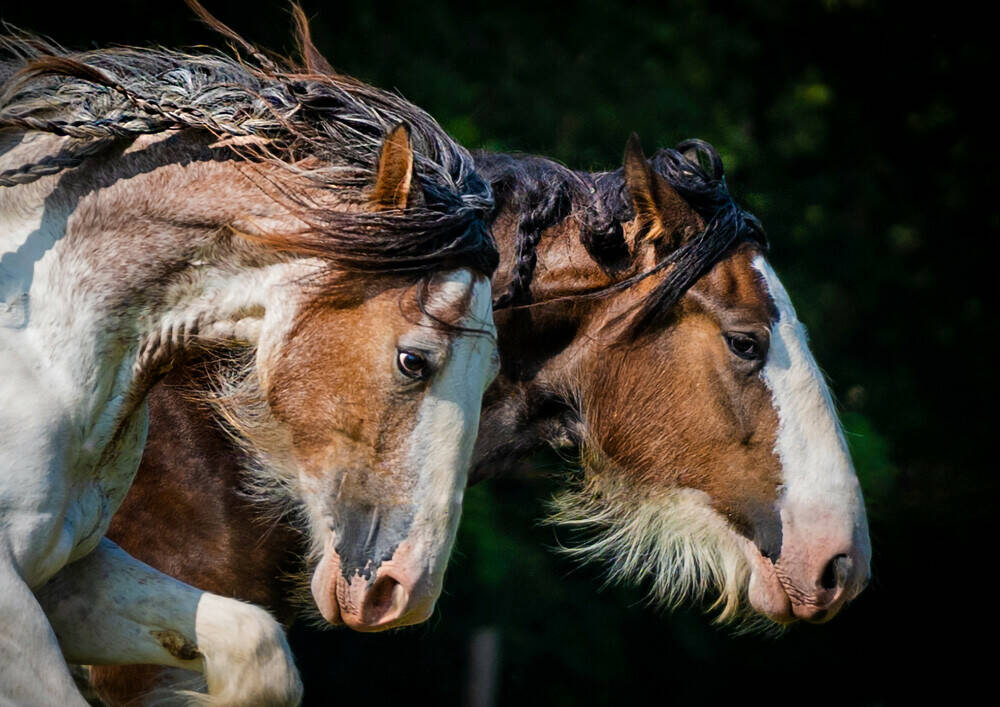
Characteristics
annonce
The horses typically grow to be around 165-185 cm.
They are most often seen in brownish colors with large, white markings.
Even though the breed is heavy, it is also fast and active, which makes it a good workhorse.
They have long legs and are one of the taller heavy horse breeds.

Whether you want to ride rides, ride a cart, work with timber, or just have it as a cozy horse, there is no better breed

The Clydesdale breed is native to Scotland, but it is still unknown which other breeds have led to the Clydesdale we have today. However, it´s believed that breeds like Shire and Friesian have been a part of shaping the Clydesdale. The Clydesdale horse was bred due to a need for draft horses that could help in the coal industry in Scotland, and the breed is relatively new as the pedigree for the breed first started in 1878. The big horses were a huge help in both the coal industry, the agricultural industry and in the transportation of goods. Due to this, it quickly became a very popular draft horse across the entire world.
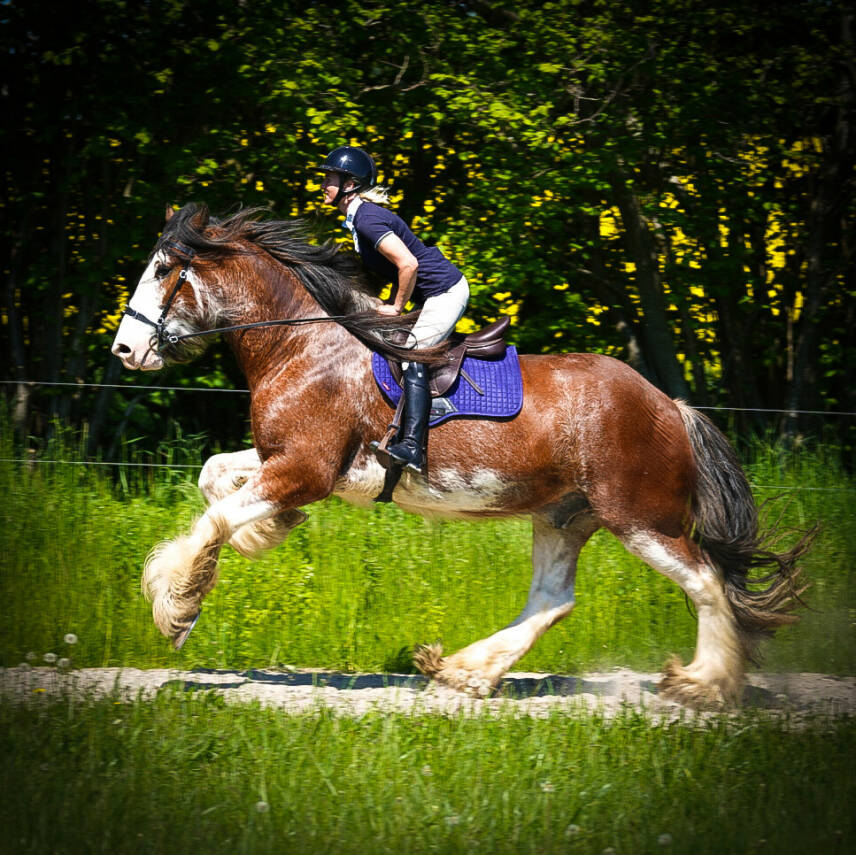
Pretty good at dressage
“Riding a Clydesdale is an amazing feeling. Even though it´s a very large and often heavy horse, there is plenty of energy and movement. If we have to compare it to another horse, it would be like
riding an Oldenburger. The long legs and its energy, make a Clydesdale a pretty good dressage horse. When it comes to training a Clydesdale to ride, it´s actually very simple. Some good groundwork for a while, then put a saddle on it and add a lightweight rider. Then it all goes smoothly from there. A bit of simple dressage work in the riding arena, and a Clydesdale is ready to ride into the woods.”
Doing the right thing
“At Clydesdale Breeders Denmark, we also work a lot with desensitizing, where one of the most important things is to be a positive leader for the horse. Lots of praise when the horse does as expected, and absolutely no scolding when it does not succeed. Here, the attempt should simply be ignored and the exercise should be repeated until the opportunity to praise comes around. And believe me – a Clydesdale just wants to do the right thing”.
An endangered horse breed
Since Clydesdale horses were primarily used as draft horses, some of the demand for them disappeared when cars and machines were invented. This caused the breed to decline in popularity and thus the number of Clydesdale horses decreased. Today, there are only about 5.000 Clydesdale horses left worldwide. This means that the breed is now categorized as
threatened, and is one of the horse breeds that are in danger of extinction. Therefore, the focus on breeding and attention are also two central aspects in the work of Clydesdale Breeders Denmark.
Promotion of the breed
“When Clydesdale Breeders Denmark started in 2019, there were only a few horses registered as purebred Clydesdale horses in Denmark. We have worked hard and pur-
posefully to get even more people to acknowledge this wonderful breed. In addition to shows, participation in animal events, and hosting open houses, we also use social media in our promotion”.
The group’s work is also very
successful, and the number of Clydesdale horses in Denmark has clearly increased simultaneously with their work.
“There is a great interest in the breed, and we have bred and distributed a number of horses since the beginning. Today, there are about 35 Clydesdales in Denmark, of which 20 of them are ours. In our collaboration, we try to work very broad to meet the demands; Saane Clydesdales fully trains the horses for both riding and driving, and most times, the new owners are part of the training. Stald Dania, on the other hand, focusses on breeding and then selling the foals when they are around 7-8 months.”
Clydesdale Breeders Denmark will continue to create awareness of the
beautiful, large and kind horse breed, so that the number of horses continues to increase, and the breed can hopefully avoid the risk of extinction.
The history

annonce
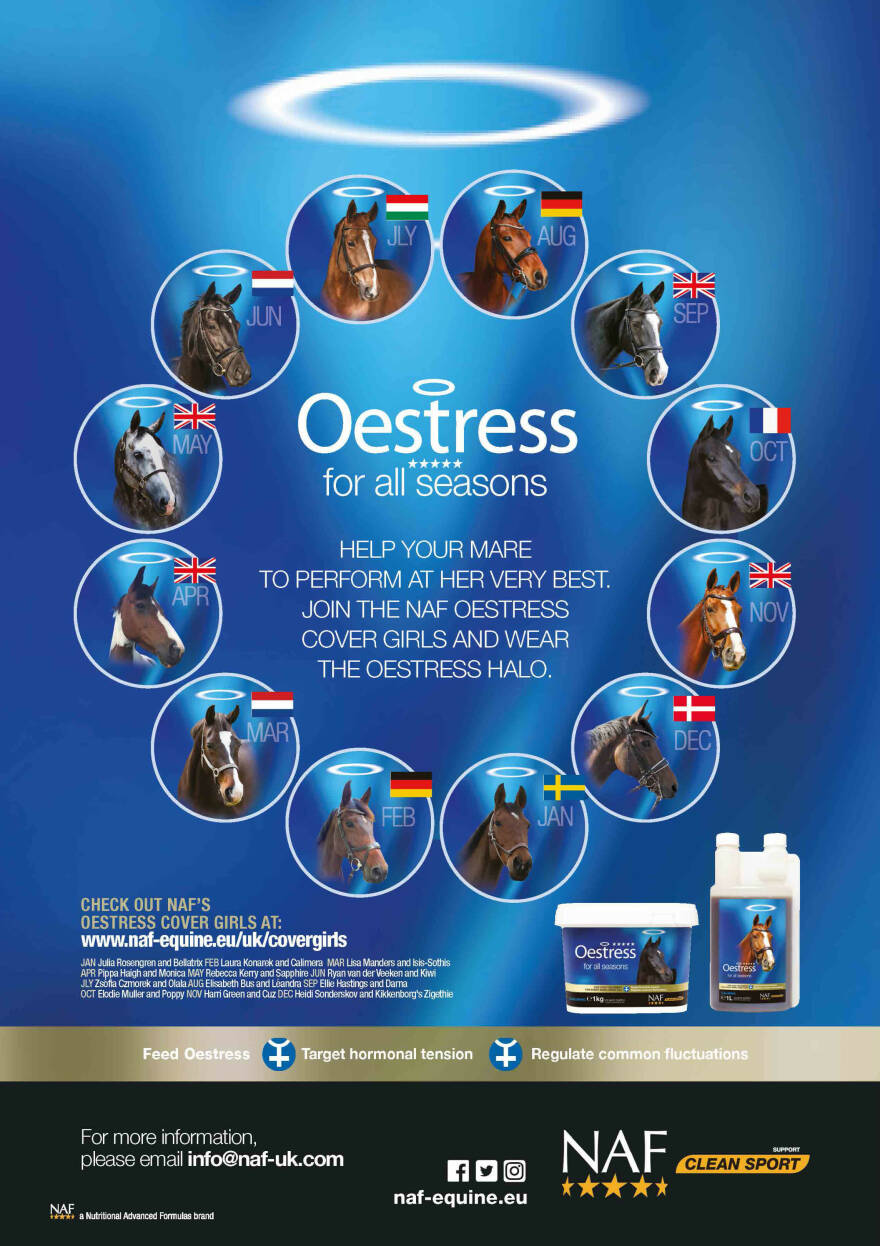
annonce



By Line Holm Rasmussen // Photo: Clydesdale Breeders Denmark // Illustration: Canva Pro
The clydesdale breed is a large, friendly and versatile horse breed, but unfortunately there are not many of them left in the world. In order to get to know the breed, and what to do with these big horses, we have teamed up with Clydesdale Breeders Denmark, a group working on spreading the knowledge of this special horse breed.
To get to know the Clydesdale breed better, and find out what it is used for nowadays, we have teamed up with Clydesdale Breeders Denmark. Clydesdale Breeders Denmark is a group of passionate horse people who are trying to increase the number of Clydesdale horses in the world (especially in Denmark) and spread awareness and knowledge of the breed and how you can use it. They are a collaborative group consisting of Saane Clydesdales and Stald Dania. The collaboration is based on exchanges of experience in relation to both care, training and breeding of the Clydesdale. But the group also have a purpose of spreading the knowledge of the breed and getting more horses to Denmark. In total, the two stables make 3-7 foals a year, and also import
Clydesdales – primarily to use them in
breeding or sell them in Denmark.
What makes the breed special?
In order to point out the most special thing about the breed, we asked the group what they fell for with this particular breed.
“The special thing about Clydes-
dales, and what you fall for at first glance, is the beautiful appearance with the gentle and calm expression from the big brown eyes. The size itself is impressive, but the beautiful feathering on the hoofs and the long slender legs with flat bones also help to give the breed a majestic look,” explains Ejner Møller Andersen from Clydesdale Breeders Denmark and adds:
“Its calm and devoted temperament, as well as the will to learn and give its best is also very characteristic for the breed. No matter what you want to
achieve, you can always count on it to do what it can to satisfy you requirements.”
Versatility offers many possibilities
In addition to the beautiful appearance and the wonderful mind, the versatility of the breed is according to Ejner Møller Andersen also much appreciated.

"Riding a Clydesdale, is a great feeling"
“The best thing about the breed is its versatility. Whether you want to ride in nature, use it to drive a cart, work with timber or just have it as a horse to have fun with, there is no better breed. At Stald Dania we use the horses for trail riding, driving and working in the forest. At Saane Clydesdales, the horses are used for riding and logging, which is an exciting form of competition that is developing here in Denmark. In their home country, Scotland, the horses are often seen at shows, competing for the most beautiful bred horse. However, Clydesdales with riders are also becoming more popular.”

Whether you want to ride rides, ride a cart, work with timber, or just have it as a cozy horse, there is no better breed

Characteristics
The horses typically grow to be around 165-185 cm.
They are most often seen in brownish colors with large, white markings.
Even though the breed is heavy, it is also fast and active, which makes it a good workhorse.
They have long legs and are one of the taller heavy horse breeds.
Pretty good at dressage
“Riding a Clydesdale is an amazing feeling. Even though it´s a very large and often heavy horse, there is plenty of energy and movement. If we have to compare it to another horse, it would be like
riding an Oldenburger. The long legs and its energy, make a Clydesdale a pretty good dressage horse. When it comes to training a Clydesdale to ride, it´s actually very simple. Some good groundwork for a while, then put a saddle on it and add a lightweight rider. Then it all goes smoothly from there. A bit of simple dressage work in the riding arena, and a Clydesdale is ready to ride into the woods.”
Doing the right thing
“At Clydesdale Breeders Denmark, we also work a lot with desensitizing, where one of the most important things is to be a positive leader for the horse. Lots of praise when the horse does as expected, and absolutely no scolding when it does not succeed. Here, the attempt should simply be ignored and the exercise should be repeated until the opportunity to praise comes around. And believe me – a Clydesdale just wants to do the right thing”.
An endangered horse breed
Since Clydesdale horses were primarily used as draft horses, some of the demand for them disappeared when cars and machines were invented. This caused the breed to decline in popularity and thus the number of Clydesdale horses decreased. Today, there are only about 5.000 Clydesdale horses left worldwide. This means that the breed is now categorized as
threatened, and is one of the horse breeds that are in danger of extinction. Therefore, the focus on breeding and attention are also two central aspects in the work of Clydesdale Breeders Denmark.
Promotion of the breed
“When Clydesdale Breeders Denmark started in 2019, there were only a few horses registered as purebred Clydesdale horses in Denmark. We have worked hard and pur-
posefully to get even more people to acknowledge this wonderful breed. In addition to shows, participation in animal events, and hosting open houses, we also use social media in our promotion”.
The group’s work is also very
successful, and the number of Clydesdale horses in Denmark has clearly increased simultaneously with their work.
“There is a great interest in the breed, and we have bred and distributed a number of horses since the beginning. Today, there are about 35 Clydesdales in Denmark, of which 20 of them are ours. In our collaboration, we try to work very broad to meet the demands; Saane Clydesdales fully trains the horses for both riding and driving, and most times, the new owners are part of the training. Stald Dania, on the other hand, focusses on breeding and then selling the foals when they are around 7-8 months.”
Clydesdale Breeders Denmark will continue to create awareness of the
beautiful, large and kind horse breed, so that the number of horses continues to increase, and the breed can hopefully avoid the risk of extinction.
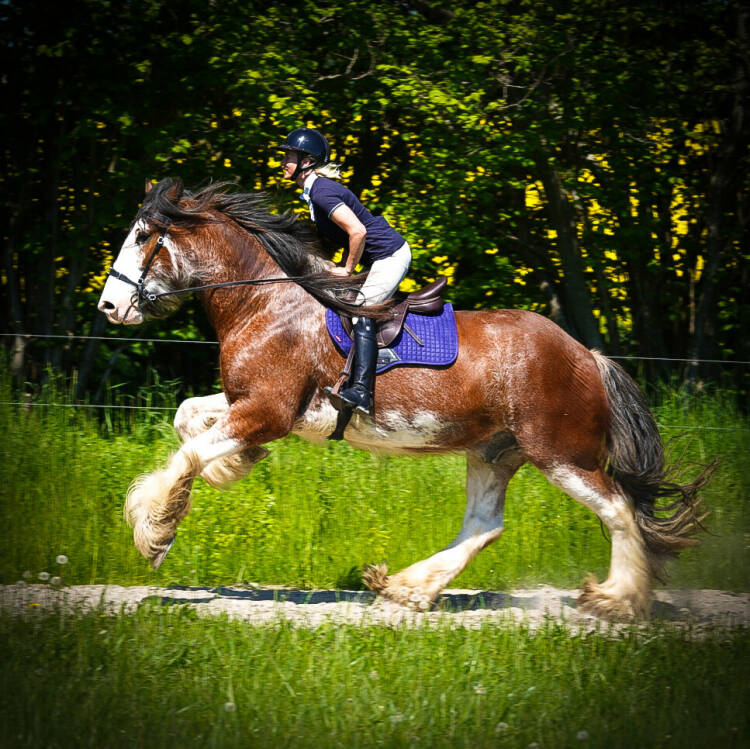

The history
The Clydesdale breed is native to Scotland, but it is still unknown which other breeds have led to the Clydesdale we have today. However, it´s believed that breeds like Shire and Friesian have been a part of shaping the Clydesdale. The Clydesdale horse was bred due to a need for draft horses that could help in the coal industry in Scotland, and the breed is relatively new as the pedigree for the breed first started in 1878. The big horses were a huge help in both the coal industry, the agricultural industry and in the transportation of goods. Due to this, it quickly became a very popular draft horse across the entire world.
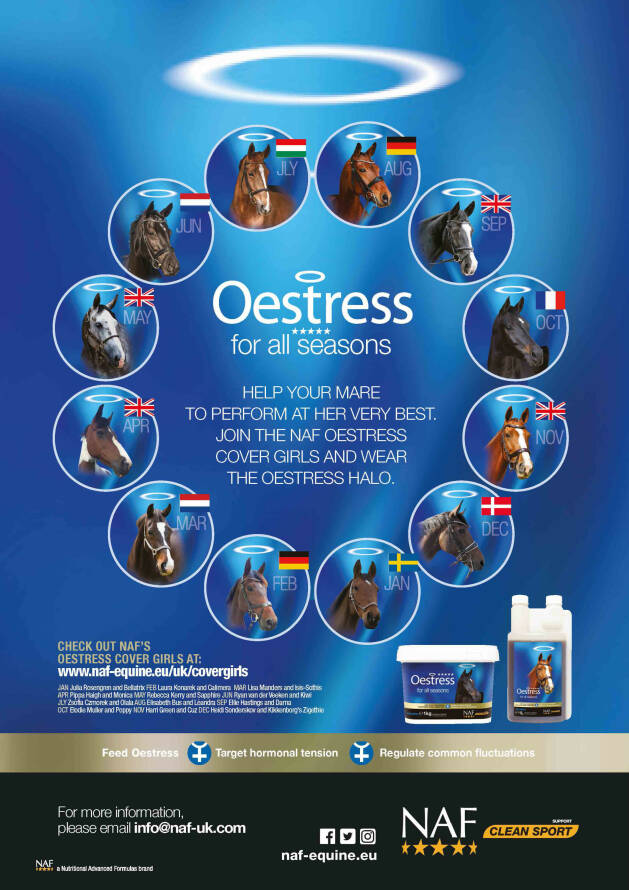
annonce

annonce

annonce




